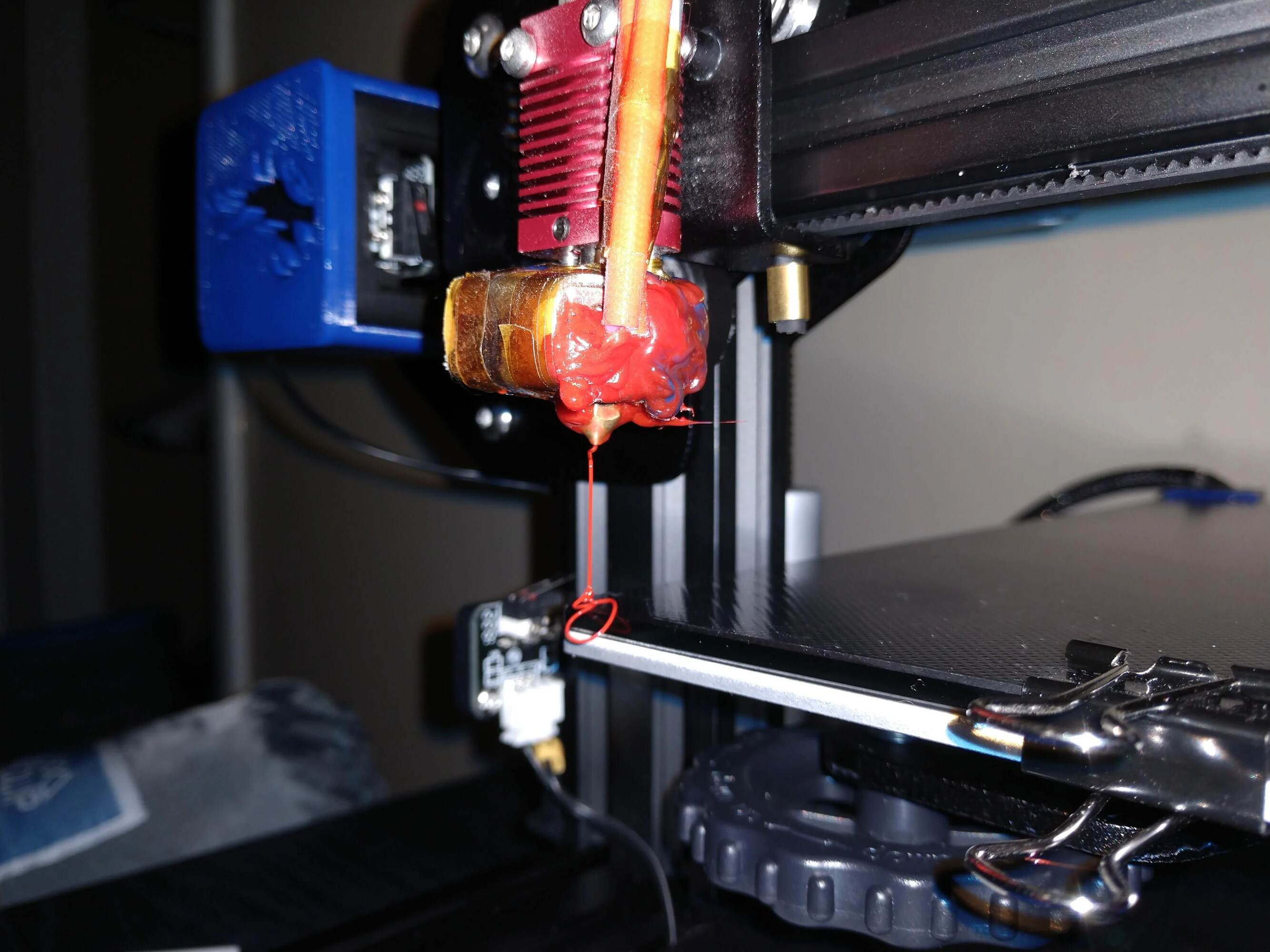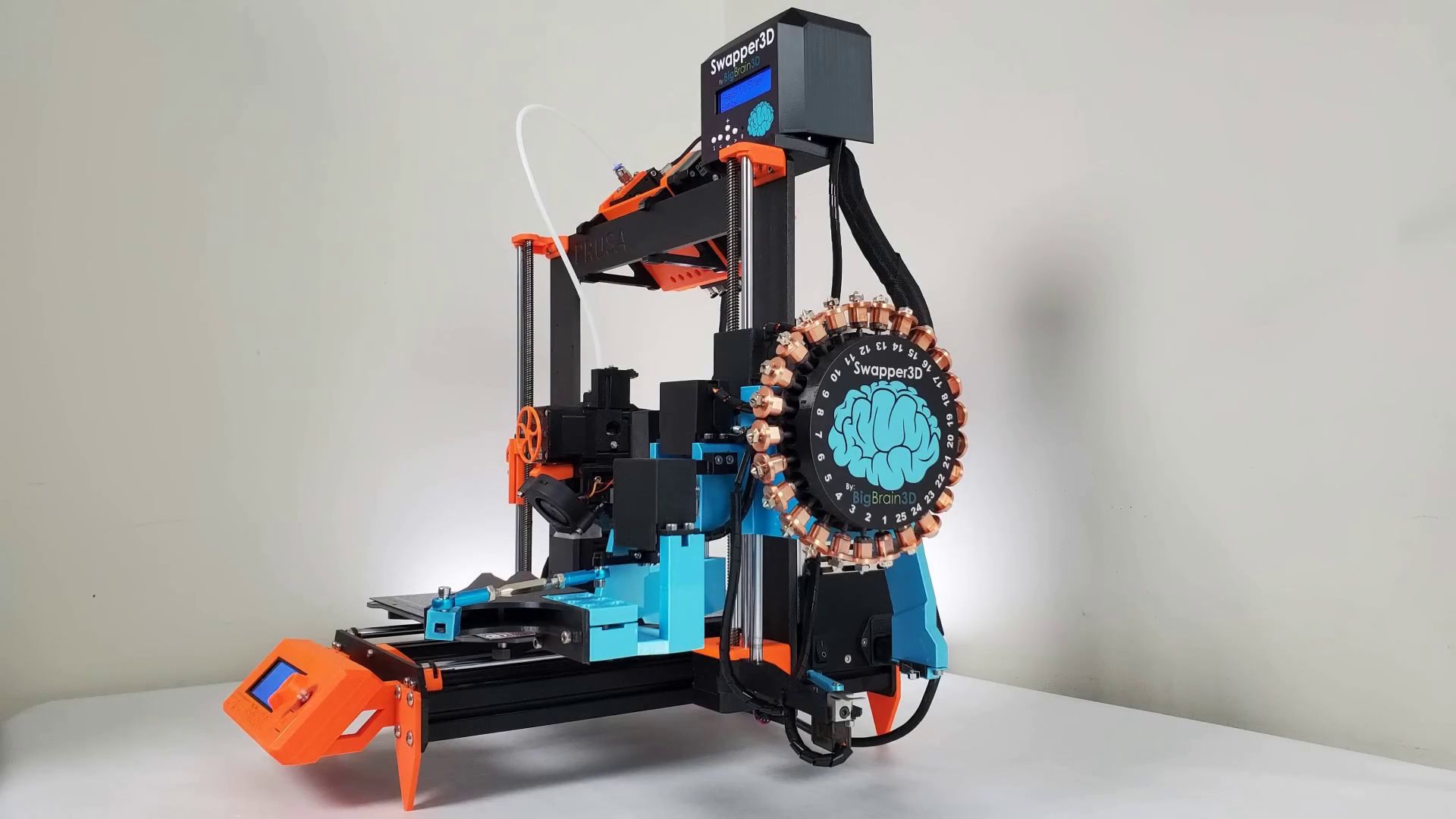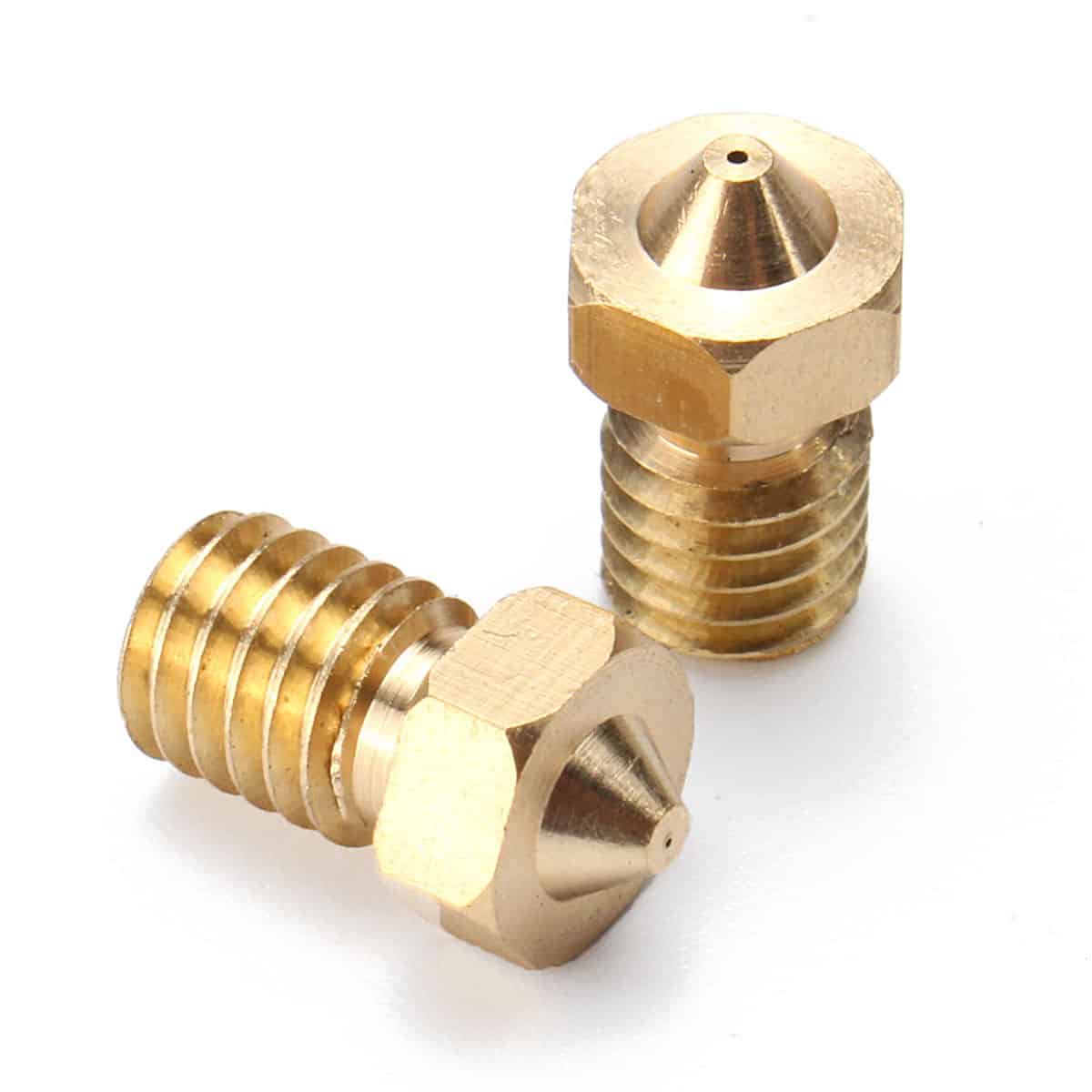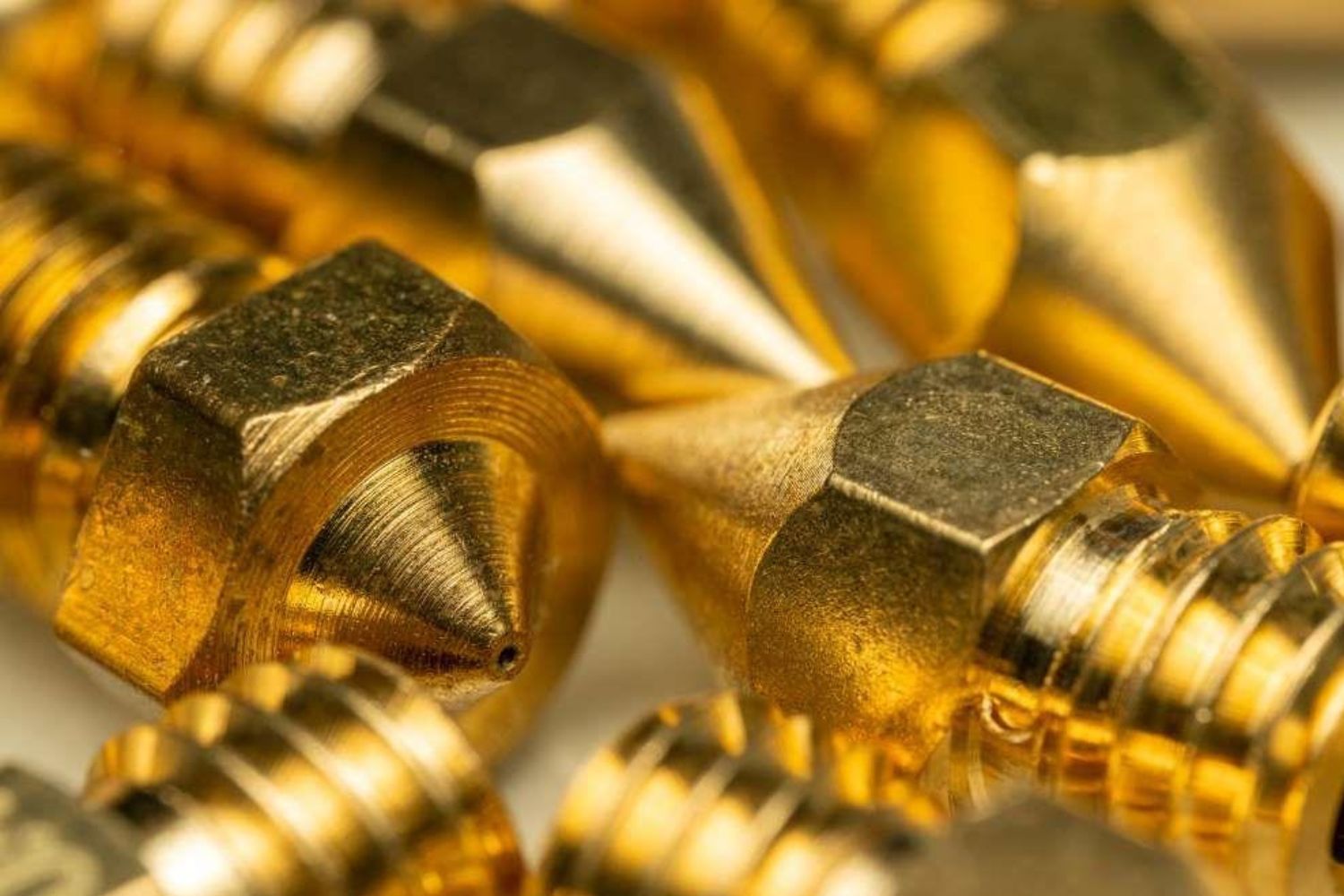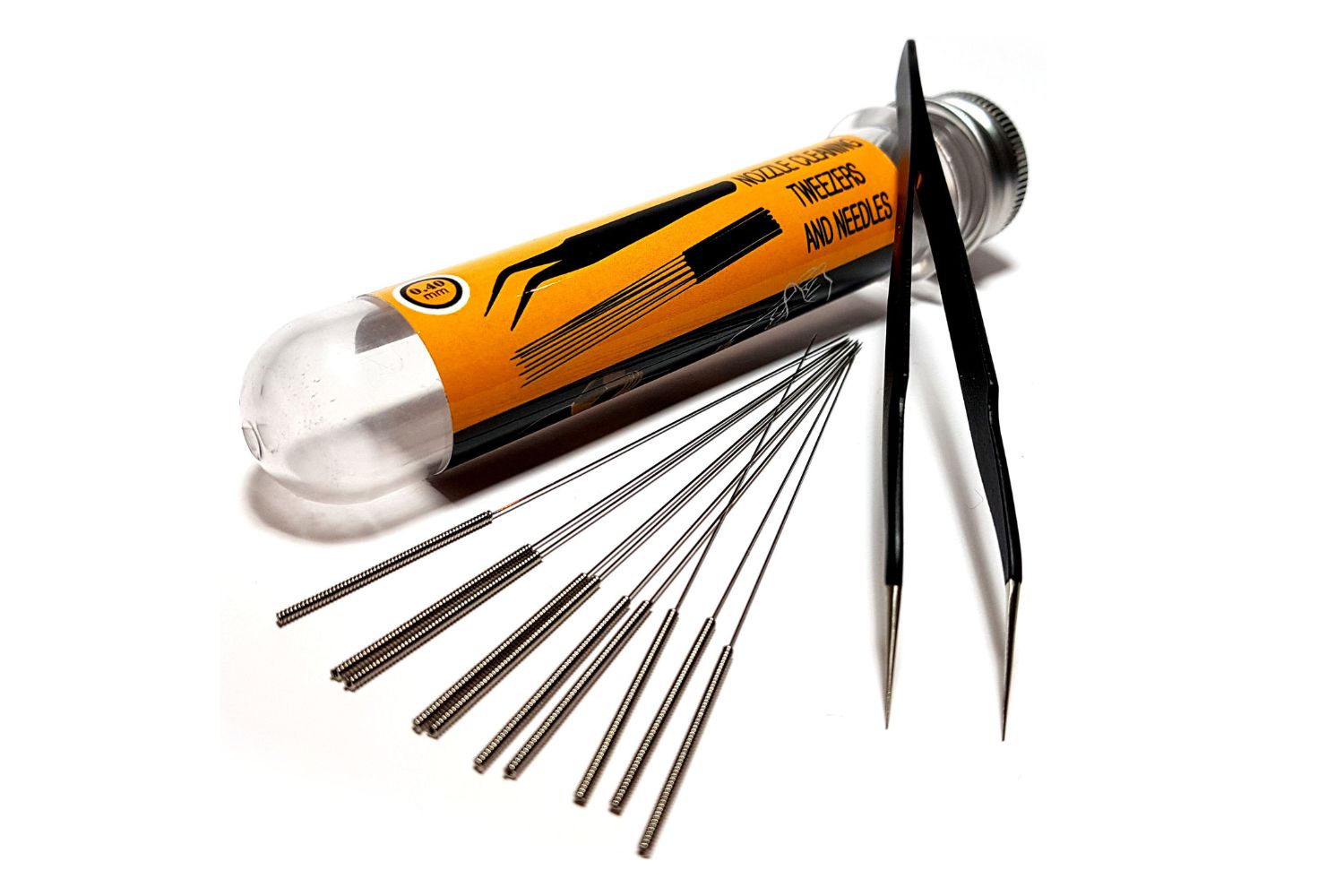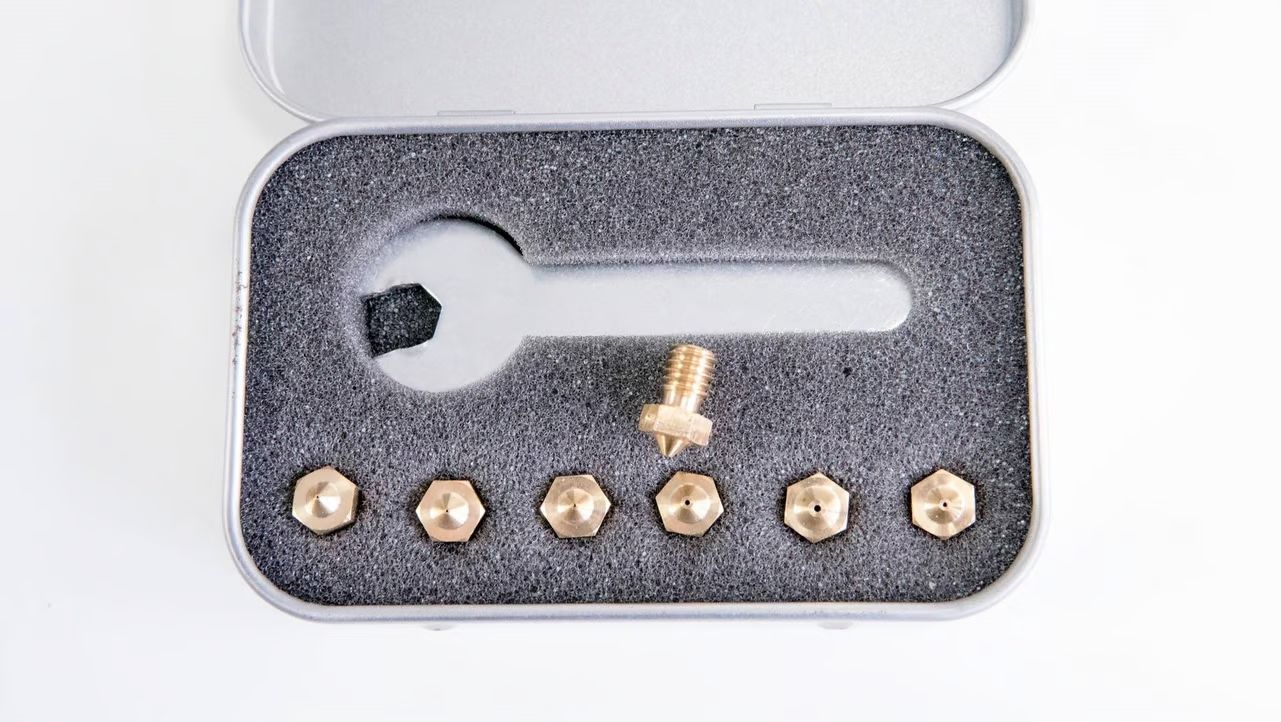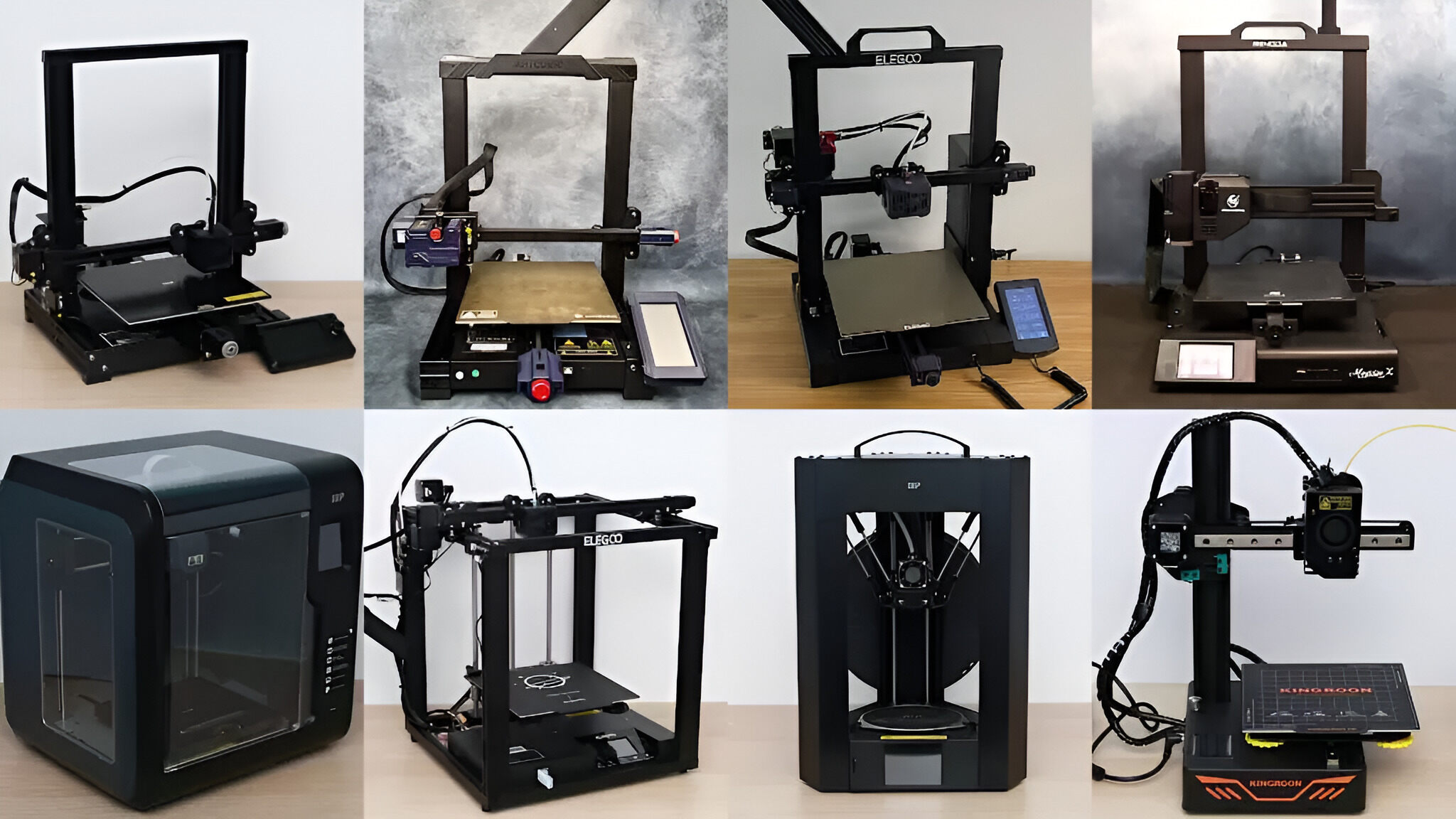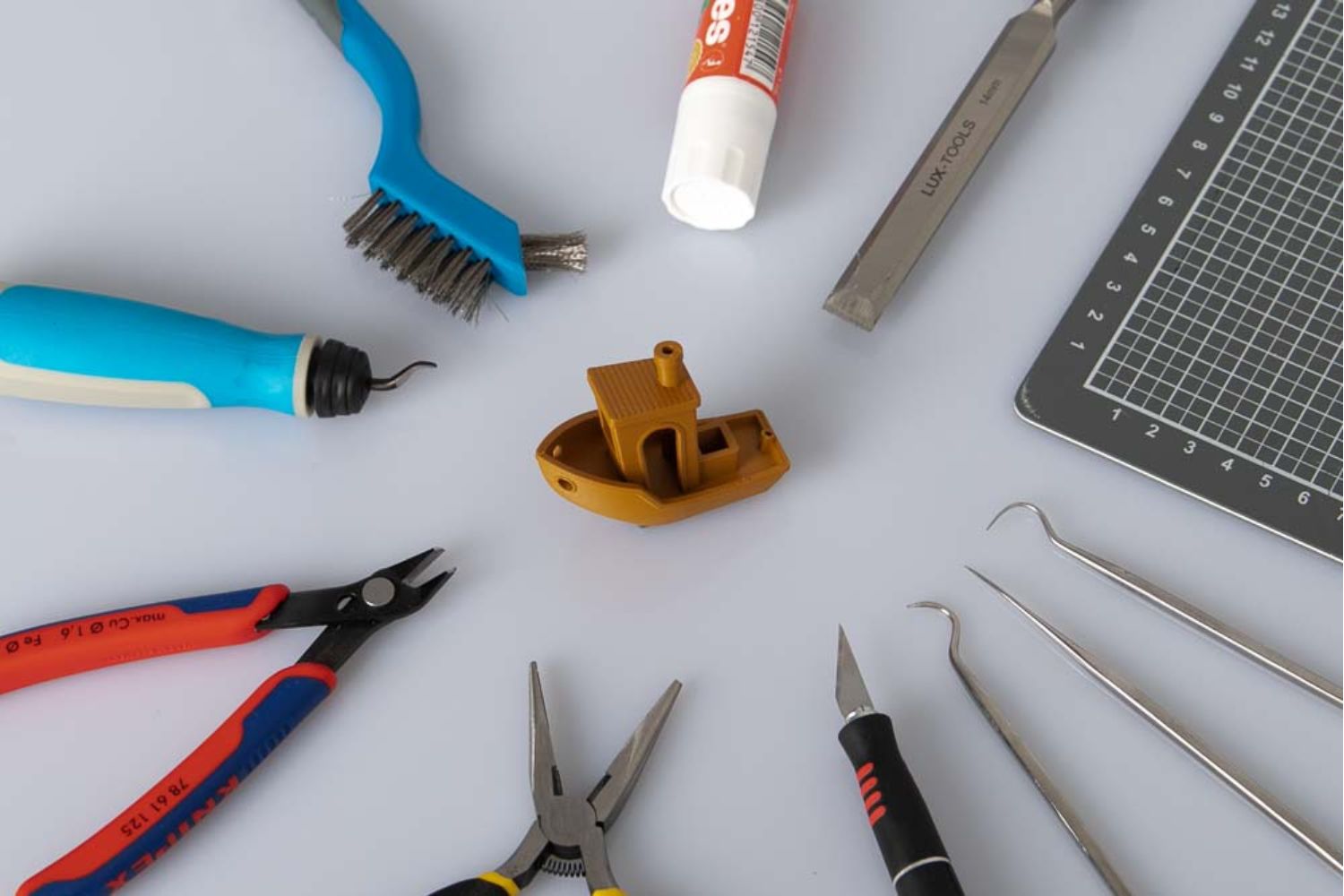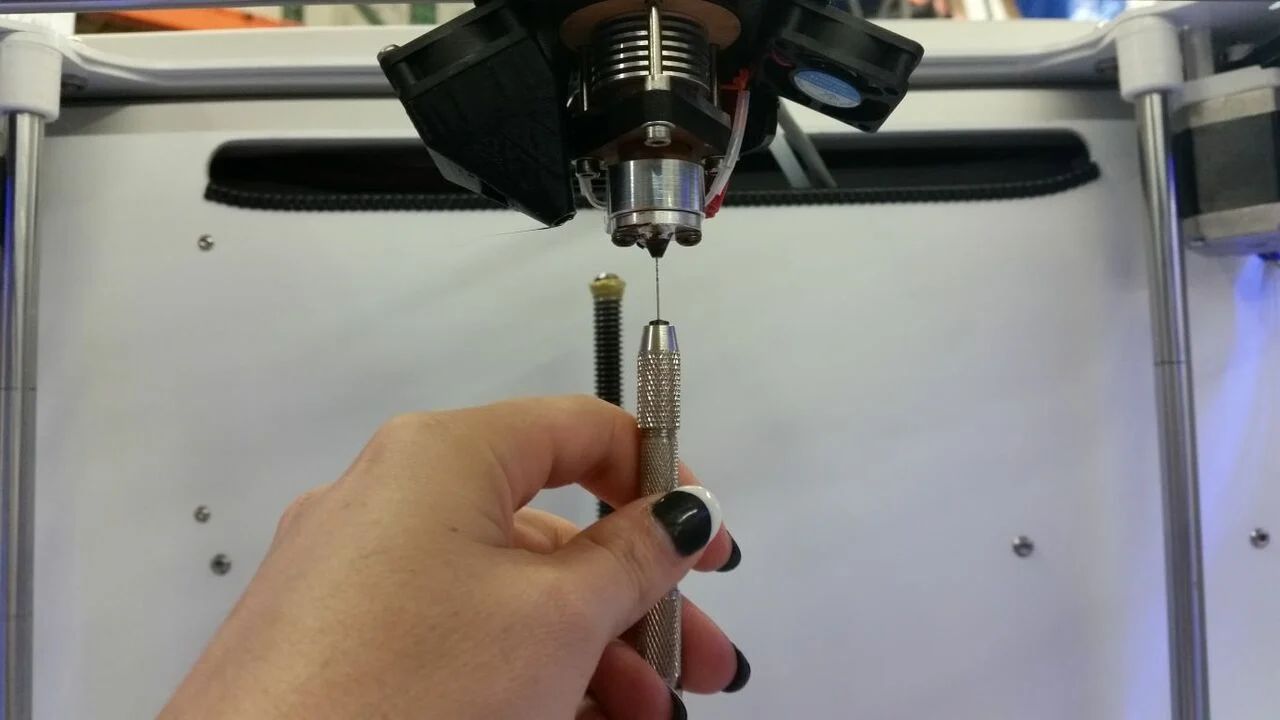Introduction
Are you experiencing clogged nozzles with your Ender 3D printer? Don’t worry, you’re not alone. Nozzle clogs are a common issue that many 3D printing enthusiasts encounter, but the good news is that they can be easily resolved. In this guide, we will walk you through the step-by-step process of unclogging the nozzle on your Ender 3, ensuring that you can get back to printing smoothly and efficiently.
One of the key factors in achieving high-quality 3D prints is a clean and unclogged nozzle. When the nozzle becomes clogged, it can result in uneven extrusion, under-extrusion, or even complete print failures. There are several reasons why a nozzle can become clogged, including debris buildup, damaged or dirty filament, or improper temperature settings.
Identifying the signs of a clogged nozzle is crucial. These signs may include inconsistent extrusion, wispy and stringy prints, or even no filament being extruded at all. If you notice any of these issues, it’s essential to address the clogged nozzle promptly to prevent further printing problems.
To unclog the nozzle, you will need a few basic materials, including a needle, cleaning solution, and heat-resistant gloves. By following our step-by-step guide, you will be able to effectively clear any debris or blockages and restore optimal functionality to your Ender 3’s nozzle.
Remember, regular nozzle maintenance is key to ensuring smooth and successful 3D printing. By taking the time to clean and unclog the nozzle when necessary, you can prevent future printing issues and achieve consistent and high-quality prints.
Now, let’s dive into the detailed process of unclogging the nozzle on your Ender 3, so you can get back to creating amazing 3D prints with confidence.
Why does the nozzle get clogged?
Understanding why the nozzle of your Ender 3D printer gets clogged is essential in preventing future issues and maintaining optimal printing performance. Several factors contribute to nozzle clogs, and being aware of them can help you take proactive measures to avoid them.
One common reason for nozzle clogs is debris buildup. Over time, tiny particles of filament residue, dust, or other foreign objects can accumulate inside the nozzle. These blockages obstruct the smooth flow of filament and result in nozzle clogs. Regular nozzle maintenance, including periodic cleaning, can help prevent debris buildup and keep the nozzle clear.
Another factor that can lead to clogged nozzles is using damaged or dirty filament. Filament with imperfections, such as knots, bumps, or excessive moisture, can cause blockages in the nozzle. It is crucial to inspect your filament before loading it into the printer and discard any that appear damaged or contaminated. Additionally, storing filament in a dry and dust-free environment can help maintain its quality and prevent clogs.
Improper temperature settings can also contribute to nozzle clogs. If the nozzle temperature is too low, the filament may not melt properly, resulting in poor flow and clogs. On the other hand, if the temperature is too high, the filament can become charred and create blockages. It is essential to ensure that you are using the correct temperature settings for the type of filament you are using to minimize the risk of nozzle clogs.
Finally, filament changes can sometimes cause nozzle clogs. When switching between different filament types or colors, it is crucial to flush out the old filament completely. Any remnants of the previous filament can mix or solidify inside the nozzle, leading to clogs. Perform a proper filament change procedure to ensure a clean transition and prevent clogs.
By understanding the potential causes of nozzle clogs and taking the necessary precautions, you can minimize the risk of experiencing this frustrating issue. Regular nozzle maintenance, careful filament selection, appropriate temperature settings, and proper filament changes can all contribute to keeping your Ender 3D printer’s nozzle clear and ensuring smooth and reliable printing operations.
Signs of a clogged nozzle
Recognizing the signs of a clogged nozzle is crucial in identifying and addressing the issue promptly. By being able to identify these signs, you can take the necessary steps to unclog the nozzle and prevent any further printing problems. Here are some common signs to look out for:
1. Inconsistent extrusion: If you notice gaps or inconsistent layers in your prints, it may indicate a clogged nozzle. The filament may not be flowing smoothly, resulting in uneven extrusion and poor print quality.
2. Wispy and stringy prints: Clogs can cause the filament to ooze out in thin wisps or strings between different parts of the print. These thin strands can significantly impact the overall print quality and may require manual removal.
3. Under-extrusion: When the nozzle is partially or completely clogged, you may notice a lack of filament being extruded. This can result in weak or incomplete prints, as the printer is not able to deposit enough material.
4. Extruder motor skipping: A clogged nozzle can put strain on the extruder motor, causing it to skip steps. This skipping can be audible and may result in a grinding noise.
5. Filament grinding: If the filament is being ground against the extruder gear, it may indicate a clog. The motor is unable to push the filament through the nozzle, causing it to slip against the gear and creating a grinding sound.
6. No filament flow: In severe cases of nozzle clogs, no filament will be extruded at all. This can result in failed prints or objects with missing sections.
7. Error messages: Some 3D printers are equipped with error detection systems that can detect nozzle clogs. These systems may display error messages or pause the printing process when a clog is detected.
If you notice any of these signs, it is essential to address the clogged nozzle immediately. Continuing to print with a clogged nozzle can lead to further issues and potentially damage your printer. By recognizing the signs of a clogged nozzle, you can take the necessary steps to unclog it and ensure smooth and successful 3D printing operations.
Materials needed to unclog the nozzle
Before you begin the process of unclogging the nozzle on your Ender 3D printer, it’s important to gather the necessary materials. Having these items on hand will enable you to complete the task efficiently and effectively. Here are the materials you will need:
1. Heat-resistant gloves: When working with a heated nozzle, it’s crucial to protect your hands from burns or other injuries. Heat-resistant gloves will allow you to handle the hot components safely.
2. Needle or precision cleaning tool: A fine needle or a precision cleaning tool (such as a cleaning filament or a specially designed cleaning tool) is required to clear the nozzle of any clogs or debris. The diameter of the needle or tool should match the size of your nozzle for precise cleaning.
3. Cleaning solution: A cleaning solution specifically designed for 3D printer nozzles is essential to dissolve any stubborn clogs or filament residue. There are various commercially available cleaning solutions that are safe to use on brass or stainless steel nozzles. Alternatively, you can use acetone or a strong isopropyl alcohol solution.
4. Cleaning brush or toothbrush: A small cleaning brush or a toothbrush with soft bristles can be handy for gently scrubbing the nozzle and removing any remaining debris or residue.
5. Paper towels or lint-free cloth: Having paper towels or a lint-free cloth nearby is crucial for wiping away any excess cleaning solution or filament remnants during the unclogging process.
Make sure to gather all these materials before you start the nozzle unclogging process. Having everything within reach will make the process smoother and more efficient. Additionally, ensure that the working area is clean and well-ventilated to provide a safe and comfortable environment for the unclogging process.
Step 1: Heating up the nozzle
The first step in unclogging the nozzle of your Ender 3D printer is to heat up the nozzle. Heating the nozzle will allow the trapped filament to soften and make it easier to clear any blockages. Here’s how to proceed:
1. Ensure that your printer is turned on and that the filament is loaded into the extruder.
2. Access the printer’s menu and navigate to the “Preheat” or “Prepare” section.
3. Select the option to preheat the nozzle. The recommended temperature for preheating is around 200-220°C, but it may vary depending on the type of filament you are using.
4. Wait for the nozzle to reach the desired temperature. Most printers have an indicator that shows the current nozzle temperature. This process may take a few minutes, so be patient.
5. Put on your heat-resistant gloves to protect your hands from the hot nozzle.
6. Once the nozzle has reached the target temperature, use the appropriate menu option to disable the stepper motors. This will allow you to manually move the extruder.
Heating the nozzle is an important step as it helps to soften any clogs or stuck filament inside. It’s essential to let the nozzle reach the proper temperature before moving on to the next steps, as a hot nozzle will make the unclogging process more effective.
Remember to exercise caution when working with a heated nozzle and always wear heat-resistant gloves to protect your hands from burns. Let’s move on to the next step once the nozzle has reached the desired temperature.
Step 2: Removing the filament
Now that the nozzle of your Ender 3D printer is heated up, it’s time to remove the filament from the extruder. Removing the filament is necessary to access the clogged nozzle and clear any blockages. Follow these steps to remove the filament:
1. With your heat-resistant gloves on, gently grasp the filament near the extruder and apply slight pressure to release it from the extruder gear. This will allow the filament to be pulled out smoothly.
2. Slowly and steadily pull the filament out of the extruder. As you pull, it’s important to make sure the filament is not tangled or stuck anywhere along the path. If you encounter resistance, stop pulling and check for any obstructions.
3. Continue pulling the filament until it is completely removed from the extruder and nozzle. You may need to apply a slight twisting motion to help loosen any stuck filament.
4. Inspect the removed filament for any signs of clogs or deformities. If you notice any irregularities, such as a bulge, charred areas, or unusual discoloration, it may indicate a clog or filament quality issue.
5. Dispose of the removed filament if it appears damaged or contaminated. Using a fresh, clean filament is crucial in preventing future clogs and achieving high-quality prints.
By removing the filament, you create space to access the clogged nozzle and prepare for the cleaning process. Proceed to the next step to begin clearing the nozzle using a needle or precision cleaning tool.
Step 3: Clearing the nozzle with a needle
Now that the filament has been removed, it’s time to clear the clogged nozzle of your Ender 3D printer using a needle or a precision cleaning tool. This step will help dislodge any debris or filament remnants that are causing the clog. Follow these steps to clear the nozzle:
1. Ensure that you have a fine needle or a suitable precision cleaning tool ready. The diameter of the needle or tool should match the size of your nozzle for effective cleaning.
2. With the heated nozzle still in place, gently insert the needle or tool into the nozzle opening. Be careful not to apply excessive force or damage the nozzle.
3. Gently move the needle or tool in a circular motion inside the nozzle. This will help dislodge any blockages and clear the pathway for filament flow. Avoid pushing too hard to prevent any nozzle damage.
4. Carefully withdraw the needle or tool from the nozzle, ensuring any debris or clog is removed along with it. Take a moment to inspect the removed debris for any signs of a clog or filament residue.
5. Wipe the needle or tool with a lint-free cloth or a paper towel to remove any collected residue or debris. This will enable you to reuse the needle or tool for further cleaning, if needed.
Clearing the nozzle with a needle or precision cleaning tool is an effective method to dislodge clogs and restore proper filament flow. However, keep in mind that this method may not always be sufficient for stubborn or severe clogs. In such cases, you may need to proceed to the next steps to completely clear the nozzle.
Moving on to the next step, we will discuss soaking the nozzle in a cleaning solution to dissolve any remaining debris or filament remnants.
Step 4: Soaking the nozzle in cleaning solution
If clearing the nozzle with a needle or precision cleaning tool didn’t completely remove the clog, soaking the nozzle in a cleaning solution can help dissolve any remaining debris or filament remnants. This step ensures a thorough cleaning and prepares the nozzle for further unclogging. Follow these steps to soak the nozzle in a cleaning solution:
1. Prepare a cleaning solution suitable for 3D printer nozzles. There are various commercially available cleaning solutions specifically designed for this purpose. Alternatively, you can use acetone or a strong isopropyl alcohol solution, depending on the nozzle material.
2. With the nozzle still heated, take the nozzle and submerge it in the cleaning solution. Make sure to completely immerse the nozzle but avoid submerging any other parts of the printer.
3. Allow the nozzle to soak in the cleaning solution for about 20-30 minutes. This will give the solution enough time to dissolve any stubborn clogs or filament residue.
4. While the nozzle is soaking, gently agitate it from time to time. This can help to loosen any remaining debris and enhance the cleaning process.
5. After the required soaking time has passed, carefully remove the nozzle from the cleaning solution and rinse it under running water. Make sure to remove any traces of the cleaning solution and dry the nozzle thoroughly.
By soaking the nozzle in a cleaning solution, you ensure a more comprehensive cleaning process. The solution helps to dissolve any remaining debris or filament remnants, making it easier to clear the clog completely. Once the nozzle is rinsed and dried, proceed to the next step to clear any remaining debris and reassemble the nozzle.
Keep in mind that this step may not be necessary for every clog. If the previous steps were sufficient to clear the nozzle, you can skip this step and proceed directly to the next step.
Step 5: Clearing any remaining debris
After soaking the nozzle in a cleaning solution, it’s time to clear any remaining debris and ensure that the nozzle is fully unclogged. This step will help to remove any last traces of filament residue or other obstructions that may still be present. Follow these steps to clear any remaining debris:
1. With the nozzle completely dry and still heated, inspect the opening for any visible debris. Use a clean needle or a precision cleaning tool to gently remove any remaining obstructions.
2. Insert the needle or tool into the nozzle opening and carefully scrape along the sides to dislodge any stubborn residue. Avoid applying excessive force to prevent damaging the nozzle.
3. Continue to clean and scrape until the nozzle opening is clear of any remaining debris. Take your time and be thorough in this step to ensure optimal performance.
4. Once you are satisfied that the nozzle is free from any obstructions, carefully remove the needle or tool from the nozzle. Take a moment to inspect the removed debris for any signs of remaining clogs or filament residue.
5. Wipe the nozzle with a lint-free cloth or a paper towel to remove any residue or debris that may have loosened during the cleaning process.
By clearing any remaining debris, you ensure that the nozzle is fully unclogged and ready for reassembly. Properly clearing the nozzle guarantees smooth and consistent filament flow, resulting in high-quality prints.
Note that stubborn clogs may require additional cleaning or maintenance steps. If you’re facing persistent issues, it’s recommended to consult the manufacturer’s instructions or seek professional assistance.
With the nozzle now clear of any remaining debris, we can move on to the next step, which involves reassembling the nozzle and preparing it for testing.
Step 6: Reassembling the nozzle
Once you have cleared the nozzle of any debris and ensured that it is fully unclogged, it’s time to reassemble the nozzle of your Ender 3D printer. Proper reassembly is crucial to ensure proper alignment and functioning of the nozzle. Follow these steps to reassemble the nozzle:
1. Make sure that the nozzle and all its components are completely dry before proceeding with reassembly. Any residual moisture can negatively impact the printing process.
2. Carefully insert the nozzle back into the heater block. Ensure that it is properly aligned and tightened but avoid over-tightening, as it can cause damage to the threads or the nozzle.
3. Reattach the heating element and thermistor to the heater block, making sure they are properly seated and secured. Double-check that all connections are secure and snug.
4. If your printer has a heat break or an insulated tube, reattach it to the heat sink and nozzle assembly. Ensure that it is properly aligned and tightened to maintain thermal stability.
5. If you had removed any cooling fans or ducts during the unclogging process, reattach them to their respective positions, ensuring proper alignment and functionality.
6. Once all components are reassembled, double-check all connections and tighten any loose screws or fittings if necessary. It’s important to have a secure nozzle assembly to prevent any leaks or misalignments.
Reassembling the nozzle is a critical step in the unclogging process, as it ensures that all components are properly situated for smooth and efficient printing operations. Take your time and be mindful of the alignment and tightening of each part.
With the nozzle reassembled, it’s time to move on to the final step: testing the nozzle to ensure that it is operating correctly and producing clean and consistent extrusions.
Step 7: Testing the nozzle
The final step in the process of unclogging the nozzle on your Ender 3D printer is to test the nozzle to ensure that it is working properly and producing clean and consistent extrusions. Testing the nozzle will give you confidence that the unclogging process was successful and that you can resume your 3D printing projects. Follow these steps to test the nozzle:
1. Heat up the nozzle to the appropriate temperature for the filament you are using. This information can typically be found in the filament manufacturer’s guidelines or the 3D printer’s user manual.
2. Once the nozzle is heated, load a small amount of filament into the extruder. Observe the extrusion to ensure that it is smooth and consistent without any signs of under-extrusion or clogs.
3. Adjust the extrusion flow rate if necessary. This can be done through the printer’s settings menu or using software such as slicing programs. Ensure that the extruded filament matches the desired flow rate for optimal printing results.
4. Start a test print or print a small calibration model to confirm that the nozzle is extruding filament correctly and that the print quality meets your expectations. Monitor the print closely to identify any issues, such as inconsistent extrusion or print defects.
5. Pay attention to the first few layers of the test print. These layers are critical in ensuring proper adhesion and layer bonding. If you notice any issues such as poor adhesion or gaps between layers, it may indicate further adjustments or nozzle cleaning are required.
6. Continue to monitor the print throughout its duration, checking for any signs of clogging or other print defects. If you encounter any issues, take note of them and troubleshoot accordingly.
By testing the nozzle, you can verify that the unclogging process was successful and that the nozzle is functioning correctly. This step allows you to confidently resume your 3D printing projects and ensures high-quality prints without any further nozzle-related issues.
Remember to regularly maintain and clean your nozzle to prevent future clogs and maintain optimal printing performance. Proper nozzle maintenance is essential for producing consistent and accurate 3D prints.
Congratulations! You have successfully unclogged the nozzle of your Ender 3D printer and tested it for proper functionality. Enjoy your 3D printing adventures with a clear and unclogged nozzle!
Conclusion
Clogged nozzles can be a frustrating hurdle in 3D printing, but fortunately, they can be resolved with a systematic approach. By following the step-by-step process outlined in this guide, you can effectively unclog the nozzle of your Ender 3D printer and restore optimal printing performance.
We started by understanding why the nozzle gets clogged, identifying factors such as debris buildup, damaged filament, and improper temperature settings. Recognizing the signs of a clogged nozzle is crucial in addressing the issue promptly, preventing further printing problems.
We then discussed the materials you will need for the unclogging process, including heat-resistant gloves, a needle or precision cleaning tool, a cleaning solution, a cleaning brush, and paper towels or a lint-free cloth.
The step-by-step process covers heating up the nozzle, removing the filament, clearing the nozzle with a needle, soaking the nozzle in a cleaning solution, clearing any remaining debris, reassembling the nozzle, and finally, testing it for proper functionality.
By diligently following each step and taking the necessary precautions, you will be able to successfully unclog the nozzle and maintain a clear pathway for filament flow. Regular nozzle maintenance is key to preventing future clogs and ensuring consistent and high-quality 3D prints.
Remember, 3D printing is an ongoing learning process, and troubleshooting nozzle clogs is just one aspect of it. As you continue to explore the possibilities of 3D printing, don’t hesitate to seek further guidance or reach out to the 3D printing community for support and advice.
Now that you have the knowledge and tools to unclog the nozzle, you can confidently tackle any clogs that may come your way. Happy printing!







